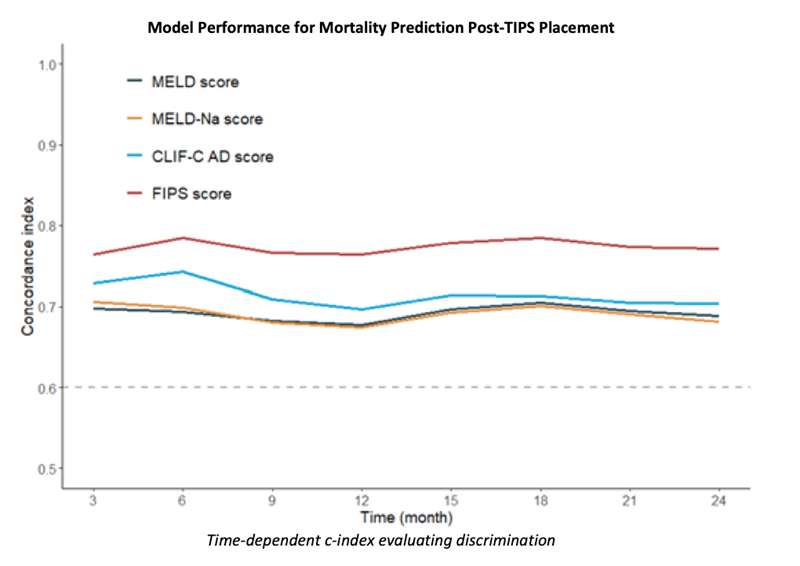FIPS Score Best Predictor for Survival in Cirrhosis Patients Post-TIPS Placement
 The recently developed Freiburg index of post-TIPS survival (FIPS) score outperformed traditional risk scoring when predicting post-TIPS (transjugular intrahepatic portosystemic shunt) survival for patients with cirrhosis.
The recently developed Freiburg index of post-TIPS survival (FIPS) score outperformed traditional risk scoring when predicting post-TIPS (transjugular intrahepatic portosystemic shunt) survival for patients with cirrhosis.
The findings, reported in the American Journal of Roentgenology, from a retrospective validation compared four prognostic scores [Model for End-Stage Liver Disease (MELD), sodium MELD (MELD-Na), CLIF Consortium Acute Decompensation (CLIF-C AD), and FIPS] in 383 patients (249 men, 134 women; mean age, 54.9 years) with cirrhosis who underwent TIPS placement (341 for variceal bleeding, 42 for refractory ascites) at Wuhan Union Hospital between January 2016 and August 2021. Model performance was measure for discrimination (via concordance index) and calibration (via Brier score and observed-to-predicted ratios) for 6-, 12- and 24-month post-TIPS survival.
“The findings support utility of FIPS score in differentiating patients who are optimal candidates for TIPS placement versus those at high risk who may instead warrant close monitoring and early liver transplantation,” concluded corresponding author Bin Xiong from Huazhong University of Science and Technology in Wuhan, China.
Ultimately, discriminative performance for 6-month survival was highest for FIPS score (concordance index, 0.784). Additionally, FIPS score yielded higher Brier scores and observed-to-predicted ratios closer to 1, as well as the strongest prognostic performance for 12-month and 24-month survival and in those patients who underwent TIPS placement for either variceal bleeding or refractory ascites.
“To our knowledge,” the authors of this AJR article noted, “our study was the first to validate the FIPS score in an Asian cohort, thereby providing evidence of the score’s generalizability.”
